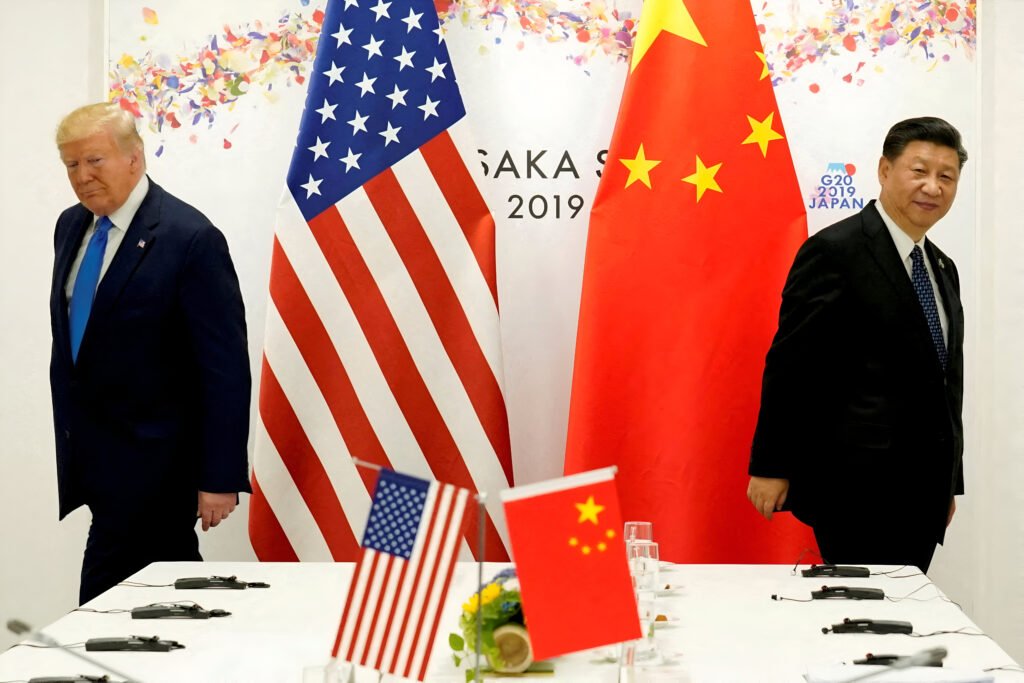
April 8, 2025 — As the latest chapter in the intensifying global trade standoff unfolds, China has drawn a bold line in the sand. In response to U.S. President Donald Trump’s threat of slapping an additional 50% tariff on Chinese goods, Beijing issued a sharp rebuke, branding Washington’s move as “blackmail” and vowing to fight back “to the end.”
Tensions escalated quickly this week after Trump, citing China’s reciprocal tariffs, declared his intent to more than double duties on Chinese imports, potentially pushing them over 100%. Beijing, refusing to be cornered, fired back through its Ministry of Commerce, accusing the United States of compounding “a mistake on top of a mistake” and attempting to coerce the world’s second-largest economy into submission.
While the rhetoric may be fierce, the impact is already tangible. Chinese manufacturers—from those producing everyday tableware to specialized flooring materials—are feeling the heat. Many are now scrambling to pivot: warning of profit hits, scouting alternative production hubs abroad, and renegotiating prices with increasingly anxious customers.
The trade war is no longer a bilateral skirmish. It’s evolving into a global affair. The European Union is weighing in, proposing its own 25% tariffs in response to what it sees as indiscriminate American economic aggression. Trump’s tariff initiative, originally marketed as a defense of U.S. industry, has now drawn dozens of nations into a storm that threatens to upend decades of trade liberalization.
Financial markets, unsurprisingly, have been reeling. In the past few days, stock exchanges from Asia to Europe saw severe selloffs, triggering fears of a looming global recession. However, on Tuesday, investors took a cautious breath. Asia’s major indices posted gains after a brutal stretch. Japan’s Nikkei surged 6%, rebounding from a 1.5-year low, following a commitment between Trump and Japanese Prime Minister Shigeru Ishiba to open bilateral trade negotiations.

China’s blue-chip index recovered slightly, up 1% after Monday’s steep 7% plunge. Hong Kong’s Hang Seng Index also climbed 2%, easing the pain from its worst trading day since the 1997 financial crisis—a dramatic response to what the city’s leaders have dubbed “ruthless” tariffs.
European and U.S. futures hinted at a stronger open as well, suggesting a brief reprieve for investors battered by the week’s earlier volatility. Oil prices, which had plummeted alongside equities, also staged a modest comeback.
Not all markets fared as well. Indonesia’s stock exchange took a heavy hit as it reopened after a holiday, dropping 9%, while the rupiah slid to record lows. The country’s central bank quickly pledged to intervene, joining several global financial authorities working overtime to stabilize shaken currencies and markets.
At the heart of it all is Trump’s hard-line economic philosophy. He insists that the tariffs—ranging from a baseline of 10% to targeted surges up to 50%—are not just a bargaining tool, but a crucial lever to restore America’s industrial power. “This is our shot to reset the table,” he told reporters from the White House. “No other president would take this on. But it has to be done.”
Whether this gamble pays off remains to be seen. While some of Trump’s supporters in the business world have urged him to stay the course, others—especially those suffering from rising input costs and retaliatory tariffs abroad—are sounding alarms. The fear is that prolonged trade conflict could choke global supply chains, raise consumer prices, and ultimately drag down economic growth on all sides.
As global tensions rise, the world is watching closely. Will this brinkmanship lead to a new, more balanced era of trade—or will it spiral into economic chaos? For now, markets teeter, nations posture, and the stakes only continue to climb.











